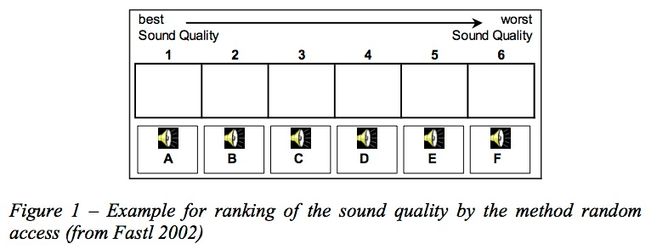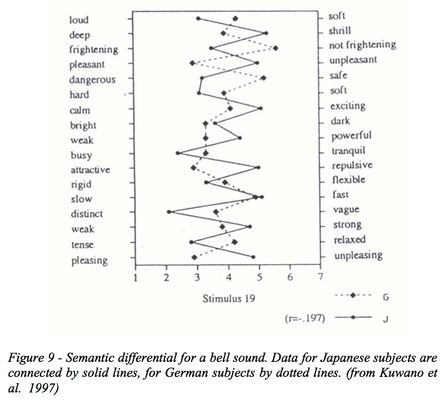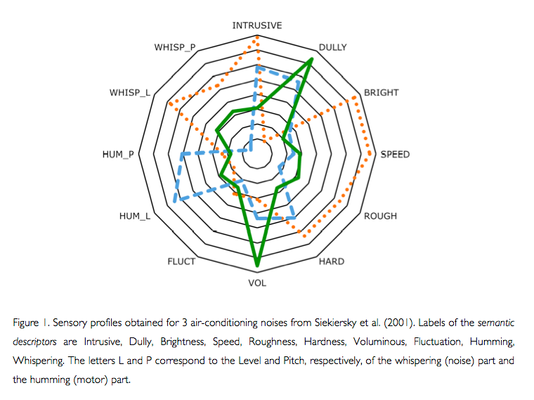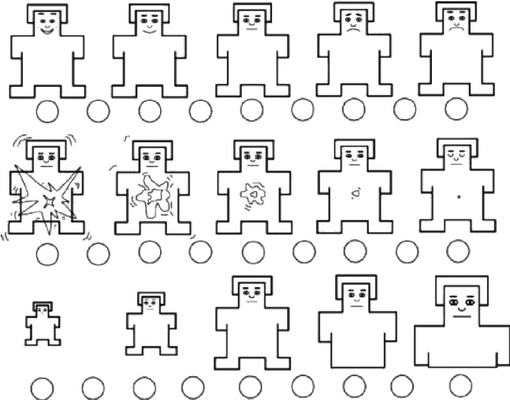Investigative Tools
Since there are hardly any conventions and "rules" about sound in the context of interaction, one goal of the workshop is the continuous empirical examination of your designs.
Here is a short overview of the tools that we recommend for this approach. It is about finding out what happens, respectively what users do, and what they mean / say, or to see more exactly why something happens or how it is experienced or interpreted.
The investigation tools are useful not only for SID but in general in the usability / user experience evaluation of applications.
For more in-depth information see → NielsenNorman
General
Formulate a clear question before the experiment. This could be about the following things:
- Verification of the (affective) effect of sounds
- Verification of usability / functionality
Verification of affordances in comparison with design hypotheses - What are the relationships between the effect, the psychoacoustic dimensions and the physical/acoustic dimensions of a sound?
Measurements / Quantifying:
Simple Measurements
Threshold Measurements (indirect)
Here a certain parameter is continuously increased until subjects express a (provoked) perception (e.g. "now I hear the sound" or "now we hear the sound aggressively").
Ratio Scaling
Participants are asked to evaluate defined parameters of certain sounds according to a scale of strength.
Ranking Experiment
In the Ranking Experiment different sound variants are arranged according to one criterion. The "Random Access" method should be used, i.e. the test persons should be able to listen to sounds repeatedly and then gradually arrange them until the arrangement is right for them.
Such experiments can also be used to investigate cause/effect by analysing an isolated sound parameter, e.g. that tonal sharpness correlates with perceived danger.
(An attempt to measure isolated dimensions continuously over a certain period of time is the "Continuous Response Digital Interface (CRDI)")
More complex (multidimensional) measurements of sound properties and effects
Semantic differential (uni- oder bipolar).
Bsp: Bipolar, as a list (from: H. Fastl (2006): Psychoacoustic Basis of Sound Quality Evaluation and Sound Engineering) > see LINK
Displayed as (monopolares) Network diagram (from P. Susini, G. Lemaitre, S. McAdams: Psychological measurement for sound description and evaluation)
Requirements for meaningful results:
- The measured parameters / attributes must be understood by all (equally). "Ugly - Beautiful", for example, is not a very suitable dimension. Better is e.g. "Pleasant - Unpleasant".
- The parameters / attributes must be clearly defined.
- Do not use too many attributes in Semantic Ratings.
- If necessary, have attributes determined by test persons.
- The sounds to be compared must be comparable in terms of duration, pitch and volume.
Emotionsassessment
Emotions are often "measured" based on the "Circumplex Model of Affect" by Russel. A common tool in the field of Human Computer Interaction is the "Self Assessment Mannequin" (SAM). This is particularly interesting because it also captures the feeling of "control" or "dominance". The design is deliberately kept very "neutral":
Interpreting, Observing
Observation (videographed), possibly with debriefing: Example of observation protocol: Observation Sheet Sonic Interaction_KP-DH_engl.pdf
Thinking (resp. Talking) Aloud Test: see e.g. https://www.nngroup.com/articles/thinking-aloud-the-1-usability-tool/
Semi-structured interviews, focus groups



